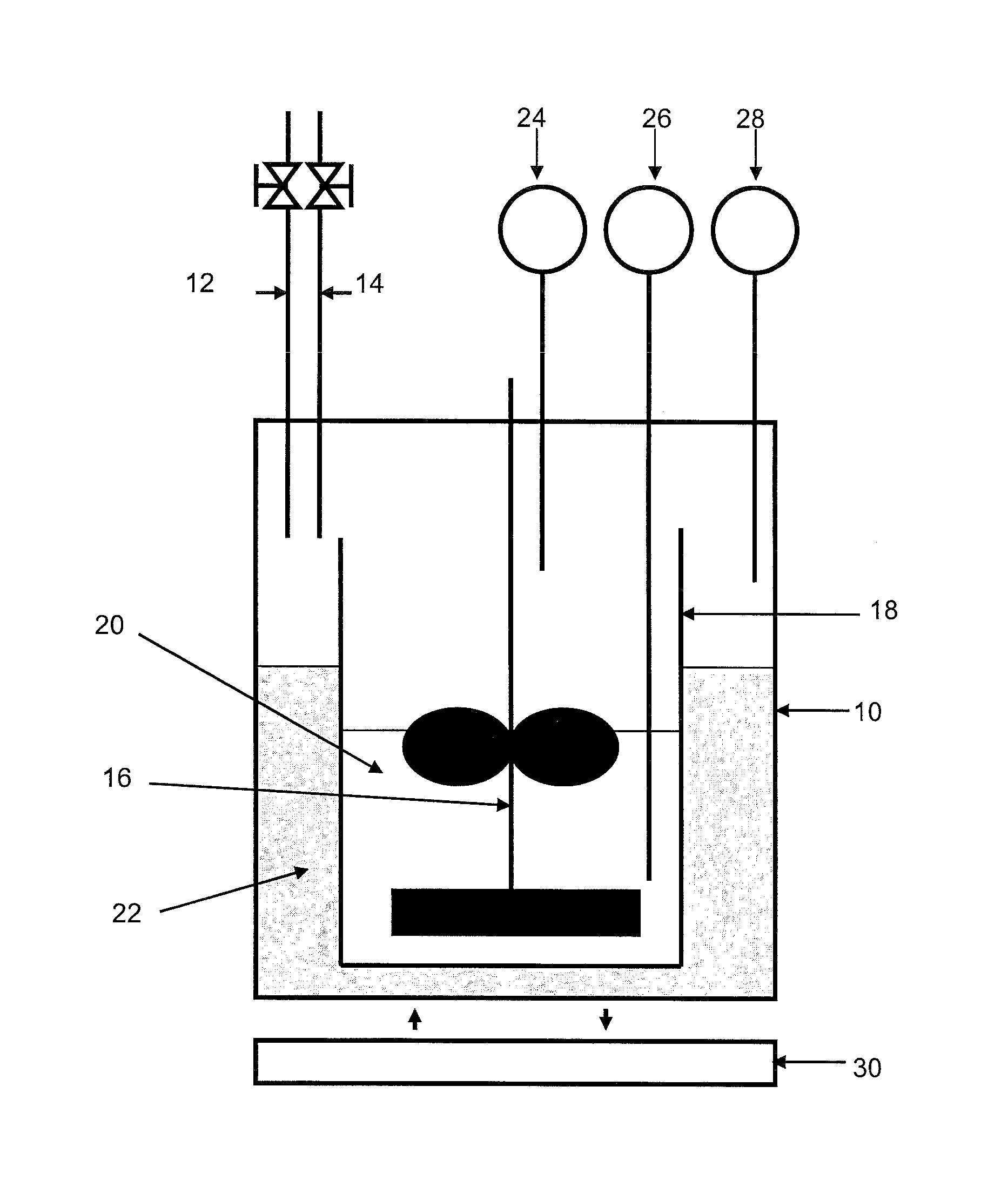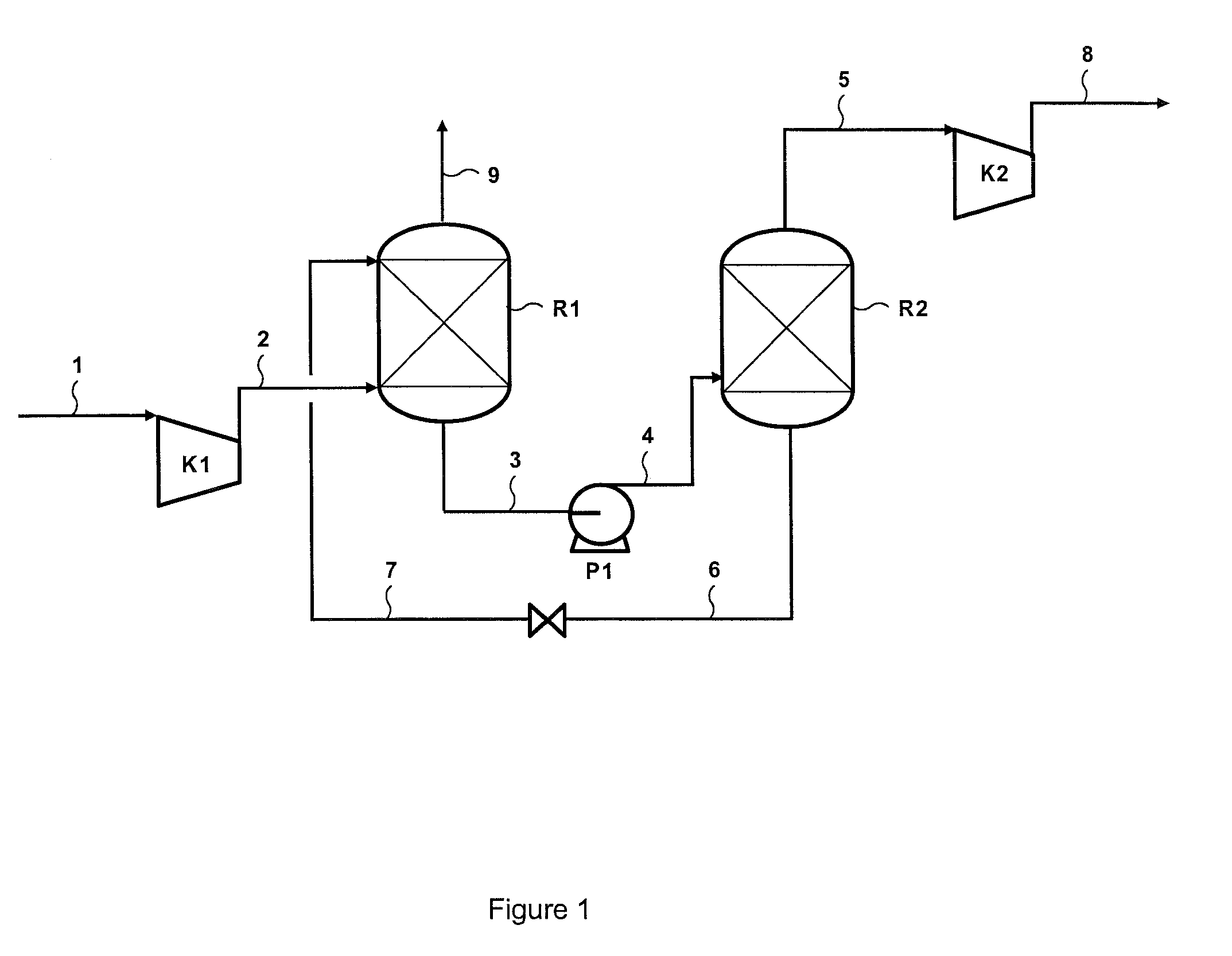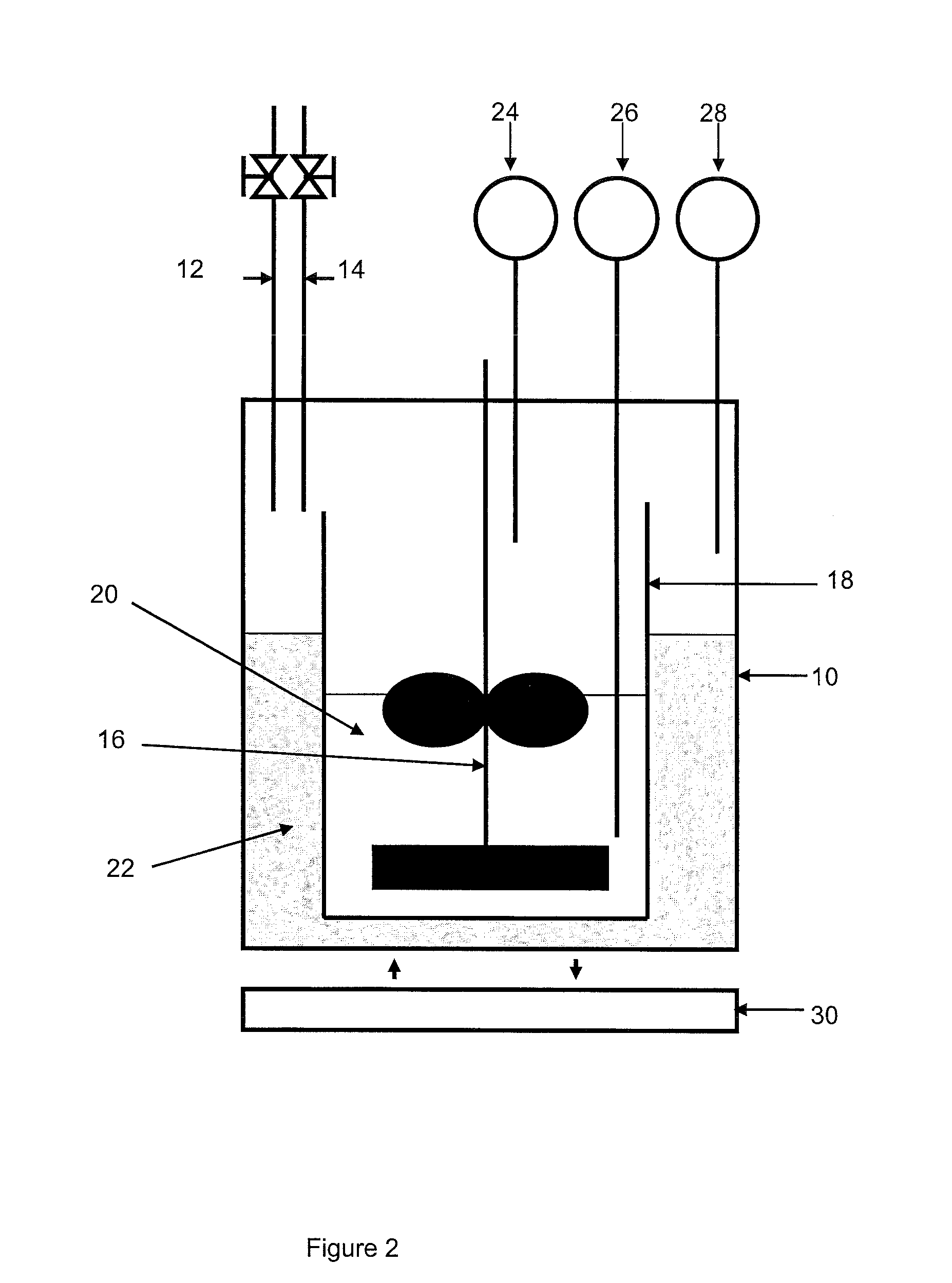Method of enriching a gaseous effluent in acid gas
a gaseous effluent and acid gas technology, applied in the field of gaseous effluent enrichment in acid gas, can solve the problems of acid gas capture energy consumption and poor industrial use of the method, and achieve the effect of reducing the energy consumption reducing the operating cost of the acid gas capture method
- Summary
- Abstract
- Description
- Claims
- Application Information
AI Technical Summary
Problems solved by technology
Method used
Image
Examples
examples
[0101]The following examples that illustrate the invention should not be considered as limitative.
[0102]Experimental Set-Up and Conditions
[0103]In order to test the efficiency of the composition used in the method according to the invention, we simulate, in the device in connection with FIG. 2, the hydrate formation stage for a gas mixture containing 85 mole % nitrogen and 15 mole % CO2. The hydrate formation stage is studied in a closed thermostat-controlled reactor wherein the pressure variations of the gas phase and the temperature variations of the gas and liquid phases are measured. These variations are linked with the formation of the hydrates.
[0104]In connection with FIG. 2, the device comprises a 3-liter reactor 10 provided with a gas inlet 12 and a gas outlet 14, a stirring device 16 and temperature and pressure detectors 26, 28, 24.
[0105]The reactor is filled with a mixture 22 of 270 ml milli-Q water and 2 ml ethylene glycol. A glass tank 18 containing 700 ml of the compos...
example no.1 (
Example No. 1 (not in Accordance with the Invention)
[0114]9 mole % tetrahydrofurane (THF) in relation to the aqueous phase are added to the base composition described above. This composition is tested under the aforementioned experimental conditions for three different initial pressure values: 5, 15 and 20 bars.
[0115]The formation of gas hydrates is observed through a pressure drop and the appearance of an exothermic peak when the temperature of the cryostat is decreasing.
[0116]The gas consumption kinetics, therefore the gas hydrate formation kinetics can be modelled by means of a model of a first order reaction. With this composition and at a pressure of 20 bars, the time constant (K) of the hydrate formation reaction is 2 hours. At a pressure of 15 bars, the time constant (K) of the hydrate formation reaction is 3 hours and, at 5 bars, it is 4 hours.
[0117]The final composition of the gas mixture is 9% CO2 and 91% N2.
example no.2 (
Example No. 2 (Not in Accordance with the Invention)
[0118]9 mass % TBAB in relation to the aqueous phase are added to the base composition and this composition is tested under the aforementioned experimental conditions for three different initial pressure values: 5, 15 and 20 bars.
[0119]No exothermic peak and no pressure decrease is observed.
[0120]No hydrate forms under these experimental conditions and in the composition tested.
[0121]The final composition of the gas mixture is identical to the composition of the gas mixture that was injected into the reactor: 85% N2 and 15% CO2.
PUM
| Property | Measurement | Unit |
|---|---|---|
| Temperature | aaaaa | aaaaa |
| Temperature | aaaaa | aaaaa |
| Temperature | aaaaa | aaaaa |
Abstract
Description
Claims
Application Information
 Login to View More
Login to View More - R&D
- Intellectual Property
- Life Sciences
- Materials
- Tech Scout
- Unparalleled Data Quality
- Higher Quality Content
- 60% Fewer Hallucinations
Browse by: Latest US Patents, China's latest patents, Technical Efficacy Thesaurus, Application Domain, Technology Topic, Popular Technical Reports.
© 2025 PatSnap. All rights reserved.Legal|Privacy policy|Modern Slavery Act Transparency Statement|Sitemap|About US| Contact US: help@patsnap.com



